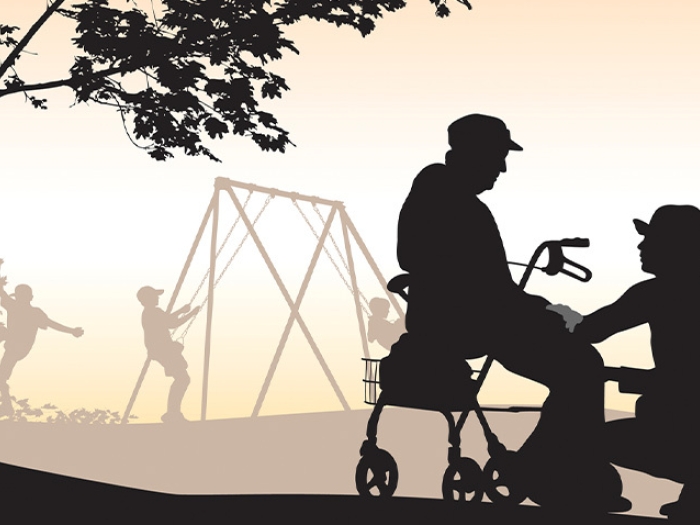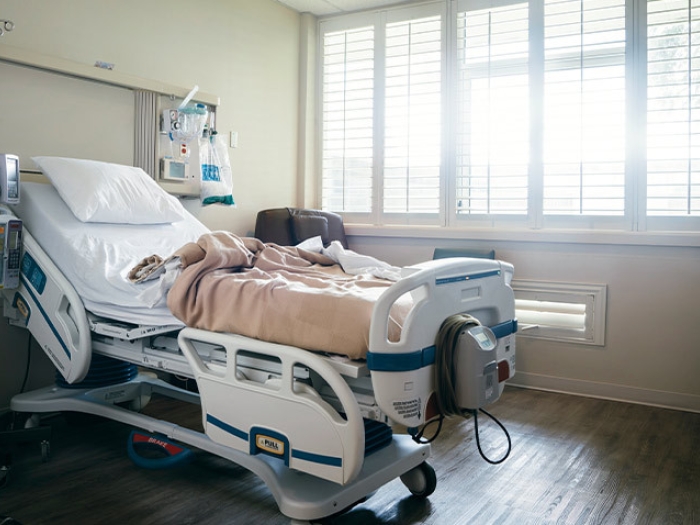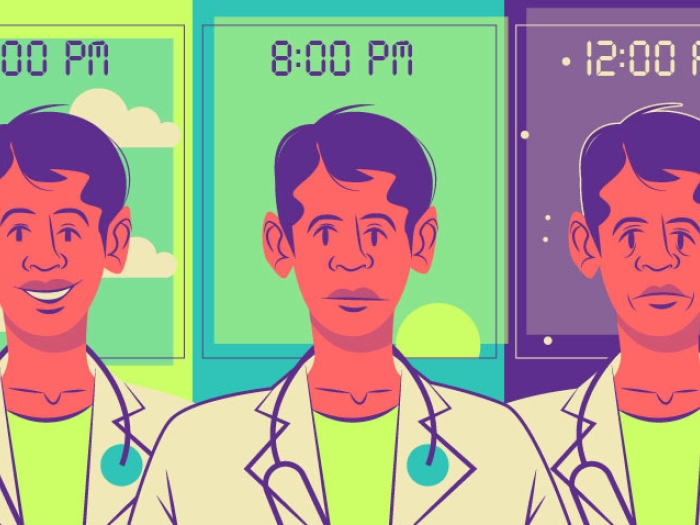Survey respondents cite cost and a condition’s prevalence as the most important factors in determining mandatory tests for infants, researchers find.
7:00 AM
Author |

Newborn screening can detect hundreds of diseases before infants ever leave the hospital, but deciding which conditions should be on the list can be difficult.
In most states, newborns are screened for at least 34 disorders. Reaching an official clinical diagnosis, however, can take weeks or months and include costly and invasive testing.
LISTEN UP: Add the new Michigan Medicine News Break to your Alexa-enabled device, or subscribe to our daily audio updates on iTunes, Google Play and Stitcher.
As new conditions are added to the recommended national screening list, researchers aim to better understand the effectiveness of screening for different diagnoses — and in which cases the benefits outweigh potential harms.
Determining that list, however, has involved little input from the public, including parents whose children may be affected by newborn screening.
Which is why a new study in The Journal of Pediatrics sought to examine public preferences on what diseases should be added to the list. A condition's incidence rate and the cost of adding a condition to the screening list ranked as the most important among the people polled, the findings suggest.
"Newborn screening is one of the most successful public health programs and has saved many newborns from death and disability," says senior author Lisa Prosser, Ph.D., M.S., director of the Child Health Evaluation and Research Center at the University of Michigan C.S. Mott Children's Hospital and a member of U-M's Institute for Healthcare Policy and Innovation.
"Public input in decisions about which disorders should be screened through newborn screening has been limited to rare disease advocacy groups," Prosser says. "We did this study because we were missing meaningful input from the general public, who pay for the programs through tax dollars and whose children undergo this mandatory screening."
Prosser also serves on the Evidence Review Group for the federal Advisory Committee on Heritable Disorders in Newborns and Children, which evaluates conditions to add to the screening panel.
She spoke about the process of adding conditions to the screening list, the impact of newborn screening and the need for further research:
How does newborn screening work?
Prosser: A small blood sample is taken from the baby right after birth and then tested for a number of disorders. We currently recommend screening for 34 conditions, but different states may screen for more disorders.
Parents who are concerned about a specific condition that is not screened for in their state may pursue additional screening.
How do new conditions get added to the list?
Prosser: Anyone can submit a nomination for a new condition to be added to the newborn screening panel. The advisory committee that reviews the request includes clinicians, researchers, public health experts, patient advocates, disease experts, lab scientists, technology experts, government representatives and newborn screening experts.
MORE FROM THE LAB: Subscribe to our weekly newsletter
This group has up to nine months to examine data and evidence on each disease. Their recommendations are reviewed by the secretary of Health and Human Services. States ultimately establish their own panels.
When a new treatment becomes available, this may also speed up the process for adding a new condition to the list.
For example, neuromuscular disease spinal muscular atrophy (SMA) — which can affect a child's ability to crawl, walk, sit up and control head movements — was most recently added to the recommended screening panel. The move was triggered by the new treatment Spinraza, a medication that studies suggest may be most effective when administered early for SMA patients.
What do you consider when evaluating conditions that are submitted?
Prosser: The advisory panel must review extensive data before deciding which conditions to recommend. The key consideration is whether an earlier diagnosis will make treatment more successful and lead to better outcomes.
Other factors include the risk of false positives, likelihood of developing symptoms, life expectancy without treatment, the age when symptoms are likely to develop, how early treatment can begin and whether treatment cures the disease. Some core conditions on the list may also help families decide whether or not to have more children.
We also consider the number of babies diagnosed with the condition. For example, is it 1 in 100,000 or 20 in 100,000?
Why not just screen for all conditions?
Prosser: Newborn screening is the first step toward diagnosis, but the next phase of testing can take many months and invasive tests for the child.
We have to weigh the potential benefits against this often-challenging experience for families and babies, especially when there's a high chance the test may be wrong or the condition may never lead to symptoms and won't require treatment.
SEE ALSO: Increasing Rates of Chronic Conditions Putting More Moms, Babies at Risk
Additionally, there's concern about creating a class of "patients-in-waiting" who may not actually need care. These are patients who have been diagnosed and labeled with a condition but don't show any signs or symptoms at the time of diagnosis.
These children and their families are essentially in limbo as babies continue being monitored and followed by health providers. They are often fearfully waiting for an onset of symptoms that may or may not ever happen.
This burden on families is perhaps the greatest potential harm of screening. We need more data to better understand how many families are impacted in this way.
There's the financial cost to consider as well. Some conditions are much more cost-efficient to add to the screening panel than others. Those that require a new screening algorithm from what a state already uses may require a completely different screening process that requires feasibility reviews and purchasing new equipment. That can take years and thousands of dollars.
What did your recent study on public preferences focus on and find?
Prosser: We conducted an online national survey among 502 people and asked them to rank the most and least important attributes when recommending a disease be added to the newborn screening panel.
Consistently, the number of babies diagnosed and cost of testing were most important to those who would recommend newborn screening. Treatment effectiveness and impact of making the diagnosis through newborn screening were less important.
Because this is a publicly funded program and every baby is tested for newborn conditions on a state's mandatory list, we thought it was important to report public opinions.
Understanding which characteristics of conditions are important to the general public may also be useful information for newborn screening program committees to consider alongside their current evidence-based evaluation — especially when evidence is limited, as is often the case with rare disorders.
What will future newborn screening research focus on?
Prosser: The recent SMA addition to the national screening recommendation provides a good opportunity for us to do more research. We are exploring ways to extend the work that has already been done for the condition review for SMA and expand it to a lifelong model so we can evaluate long-term health outcomes and cost-effectiveness of adding SMA to the screening panel.
SEE ALSO: Why Screening for Social Determinants of Health Helps Doctors Provide Better Care
We can't screen for all conditions, so we need further research to help inform us. Newborn screening makes it possible to identify rare conditions early enough to initiate treatment to achieve really substantial health benefits children may not see if families waited until conditions were clinically identified.
We also know that an early diagnosis can be of great value to patients and families as they prepare for their child's future, whether or not treatment is available.
We see a pull between the desire to add more conditions to the list and potential harms — not just the harms of cost and efficacy of testing, but also the burden on "patients-in-waiting" and their families.
We hope to study these issues from all angles to guide our discussions as we consider new conditions newborns should be screened for.

Explore a variety of healthcare news & stories by visiting the Health Lab home page for more articles.

Department of Communication at Michigan Medicine
Want top health & research news weekly? Sign up for Health Lab’s newsletters today!





